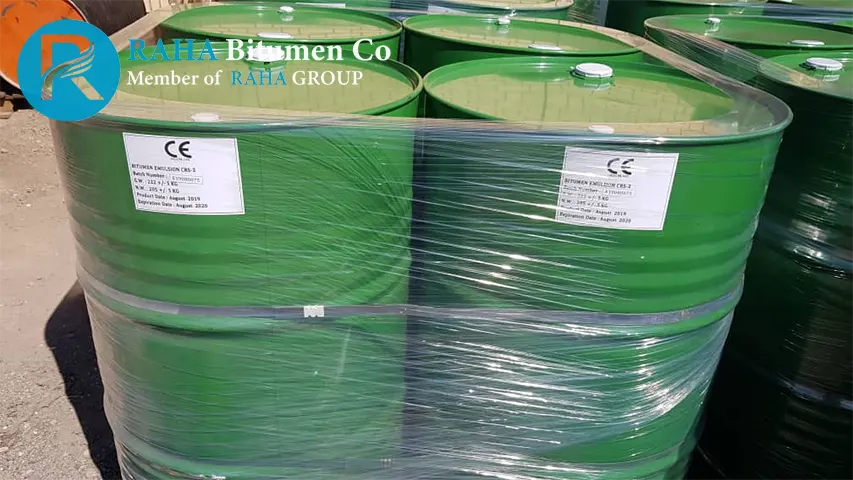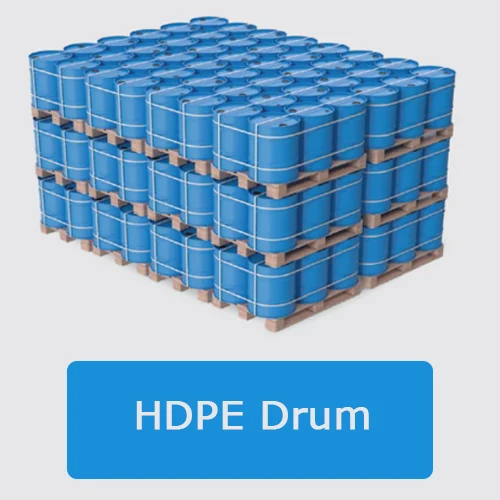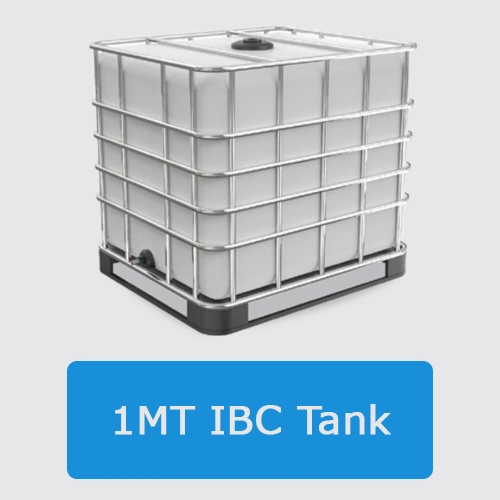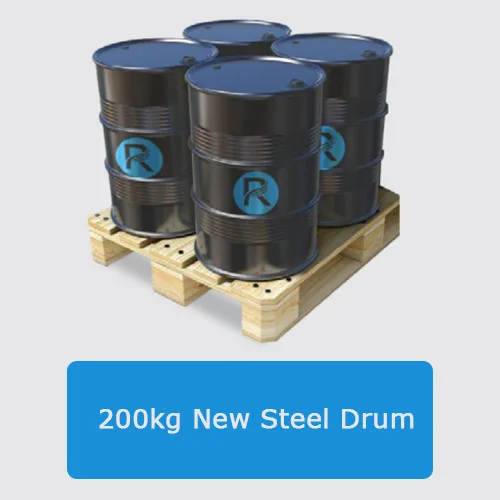
Bitumen Emulsion is a liquid composed of three liquid materials: water, bitumen, and an emulsifier. Bitumen emulsion is a liquefied type of bitumen with a low viscosity.
Description Of Bitumen Emulsion
By dispersing bitumen in water and adding an emulsifier, ordinary bitumen turns into a low-viscosity liquid that can easily be used in a variety of applications, including repairing and maintaining roads, waterproofing, spraying, etc.
There are a variety of different types of bitumen emulsions that are used in the course of road works and road maintenance. One of the largest defining factors in the different types of bitumen emulsion is the setting time. Longer setting times can cause significant disruption to traffic flow, as roads will be closed for longer.
Conversely, bituminous emulsions with shorter setting times allow for minimal disruption following maintenance works.
Since this type of bitumen is liquid, there is no need to heat it before application.
Moreover, applying bitumen emulsions using cold techniques reduces energy consumption and makes road construction environmentally friendlier.
Bitumen Emulsion Production
Bitumen emulsions are produced on bitumen mills. Generally they produce 5 – 40 tons/hour of the finished product. A smaller laboratory colloid mill is used in developing new emulsion recipes, and capable of producing up to 300 liters per hour of finished emulsions.
An emulsion is made in several steps:
- bitumen is heated, if necessary, dehydrated and is fed into the mill ;
- water is mixed with additional components (emulsifier, hydrochloric acid, stabilizer, etc.), heated and fed into the mill;
- bitumen is mixed with water/emulsifier solution;
- emulsions transportation to storage places.
The emulsions at the outcome have different viscosities. They depend on the choice of raw materials and the correct dosage of ingredients. An excessive or insufficient amount of bitumen also significantly affects the quality of the final emulsion. A mill breaks bitumen into tiny particles. Here an emulsifier coats bitumen particles keeping them away from each other making the emulsion stable. The final emulsions are all stored separately in storage tanks.
Summarizing the importance of emulsifiers/stabilizers in emulsion preparation, it is important add their precise doses for correct distribution of molecules in dispersed medium.
The lower is the viscosity of bitumen, the better is the emulsion. In the vast majority of applications bitumen emulsion is heated, but not exceeding 80-90 C, otherwise it is destroyed as higher temperatures evaporate water out of emulsion. Boiling in such cases is unacceptable!
Emulsion can not be overheated and cannot be frozen. In this case, heaters are used for heating and storage.
How are Bitumen Emulsions classified?
During the production of emulsion bitumen, bitumen and a mixture of water and emulsifier pass through the mill.
When fine particles of bitumen and emulsifier molecules attract each other, the bitumen particles take the electric charge of the emulsifier molecules.
The electrical charge of fine drops of bitumen in the water can be one of the following:
- Cationic emulsions
- Anionic emulsions
- Non-ionic emulsions
- Clay-stabilized emulsions
There is a common and simple way to identify the electrical charge of bitumen emulsion.
In this method, to identify the charge type of the droplets, an anode and a cathode are placed in a container containing bitumen emulsion.
If the bitumen droplets are attracted to the anode, it is a cationic bitumen emulsion, and if the bitumen droplets are attracted to the cathode, it is an anionic bitumen emulsion.
If the bitumen particles do not go toward the anode or cathode and do not move in any direction, the bitumen emulsion is a non-ionic type.
Types of Bitumen Emulsions
As mentioned above, anionic and cationic emulsions can be divided into three distinct groups:
- Rapid-set
- Medium-set
- Slow-set
The characteristics of anionic emulsions are specified in SABS 309 and the following classifications are used:
- Rapid-set (RS)
- Medium-set (MS)
- Slow-set (SS)
The characteristics of cationic emulsions are specified in SABS 548 and the following classifications are used:
- Rapid-set (CRS)
- Medium-set (CMS)
- Slow-set (CSS)
Bitumen Emulsion Application
Asphalt emulsions have many uses in road construction and maintenance. They can be used as an adhesive to bind together layers of pavement or aggregate material, or they can be used as a sealant for cracks and joints in existing pavement surfaces. Asphalt emulsion can also be used as an anti-strip additive to improve the adhesion between asphalt and aggregate materials, or it can be sprayed onto existing surfaces to provide waterproofing protection against moisture infiltration. Asphalt emulsion is also often used as an alternative to hot mix asphalt for cold processes such as chip sealing or slurry sealing.
Other uses, mainly in the cationic emulsion chapter (positive charge), are the installation of rolling surfaces such as surface treatments or slurry seals, which are a combination of a rapid setting emulsion or a slow setting emulsion (in some cases) with coarse aggregates of particular sizes, that once mixed together (slurry seal) or applied in layers (surface treatments) create a wearing course with great mechanical properties bonded with the aggregate particles.
These wearing surface solutions have proven to be useful in a variety of applications, be it in wet weather or heavy traffic; emulsified asphalt /emulsified bitumen mixed with aggregates at a certain application rate (according to each road design) allows for a performance and elastic modulus that creates competent asphalt pavements at a fraction of the cost.
Other applications are in a cold recycled mixture of asphalt, where old asphalt pavement is mixed, normally with a slow setting emulsion, preferably modified with polymers and cementitious materials such as lime or Portland cement; this recycled mixtures of old asphalt allows to reclaim its mechanical properties and be used as a “new” wearing course using the old asphalt as raw material for the “new” pavement.
Bitumen Emulsion Advantages & Limitations
Advantages
- The strength properties of bitumen are preserved in emulsion mixes since emulsions do not need hot mixing.
- Generally, cold mixing or just slightly warming the ingredients of the emulsion mix is done for the construction of pavements.
- Emulsion can be used in wet weather even when it is raining.
- Emulsions possess anti-stripping properties.
- Emulsions with lower viscosity or thinner consistency improve readability and allow better coating of the bitumen on the surface of aggregate.
- There is no wastage during laying and storage.
- Since emulsions are water-based, there is less effect on the environment.
- It is the least energy-intensive of all construction materials: there is no need to heat.
Limitation
- No one type of emulsion is suitable for every work. it depends upon whether the aggregate is acidic or basic in nature.
- The setting time may vary depending on the air temperature, wind velocity and type of emulsion.
- There is a wide range of curing time; a suitable emulsion mix needs to be designed for a particular need, i.e. we need to determine for each case, the optimum quantity of emulsion based on zone, type of emulsion, mix grade and desired mechanical properties.
- It has limited storage time (ranging from few days to six months).
All Grades Packing of Bitumen Emulsion
Cationic Bitumen Emulsion packed in kind of packing :
- HDPE Drum- Palletized and Shrink Wrapped
- 1MT IBC Tank
- 200kg New Steel Drum- Palletized and Shrink Wrapped
1. HDPE Drum- Palletized and Shrink Wrapped
- Loading 80Drum in 20ft Container= 16 Ton Net

2. 1MT IBC Tank
- Loading 20 IBC in 20ft Container= 20 Ton Net

3. 200kg New Steel Drum- Palletized and Shrink Wrapped
- Loading 80Drum in 20ft Container= 16 Ton Net

Storage and Handling of Bitumen Emulsion
Bitumen Emulsions should be stored in a cool, dry place, away from direct sunlight and heat sources. The ideal storage temperature for Asphalt emulsions is between 10°C and 85°C (50°F and 185°F). Bitumen emulsions should not be allowed to freeze, as this can break the emulsion and reduce its performance. Asphalt Emulsions should be stored in sealed containers to prevent moisture and contamination. The containers should be labeled with the emulsion type, the manufacture date, and the expiration date.
Bitumen Emulsions should be handled with care to avoid skin contact and inhalation of fumes. Bitumen emulsions can be irritating to the skin and eyes, and the fumes can be harmful if inhaled. When handling bitumen emulsions, it is important to wear personal protective equipment (PPE), including gloves, goggles, and a respirator. Bitumen emulsions should be applied in a well-ventilated area.


